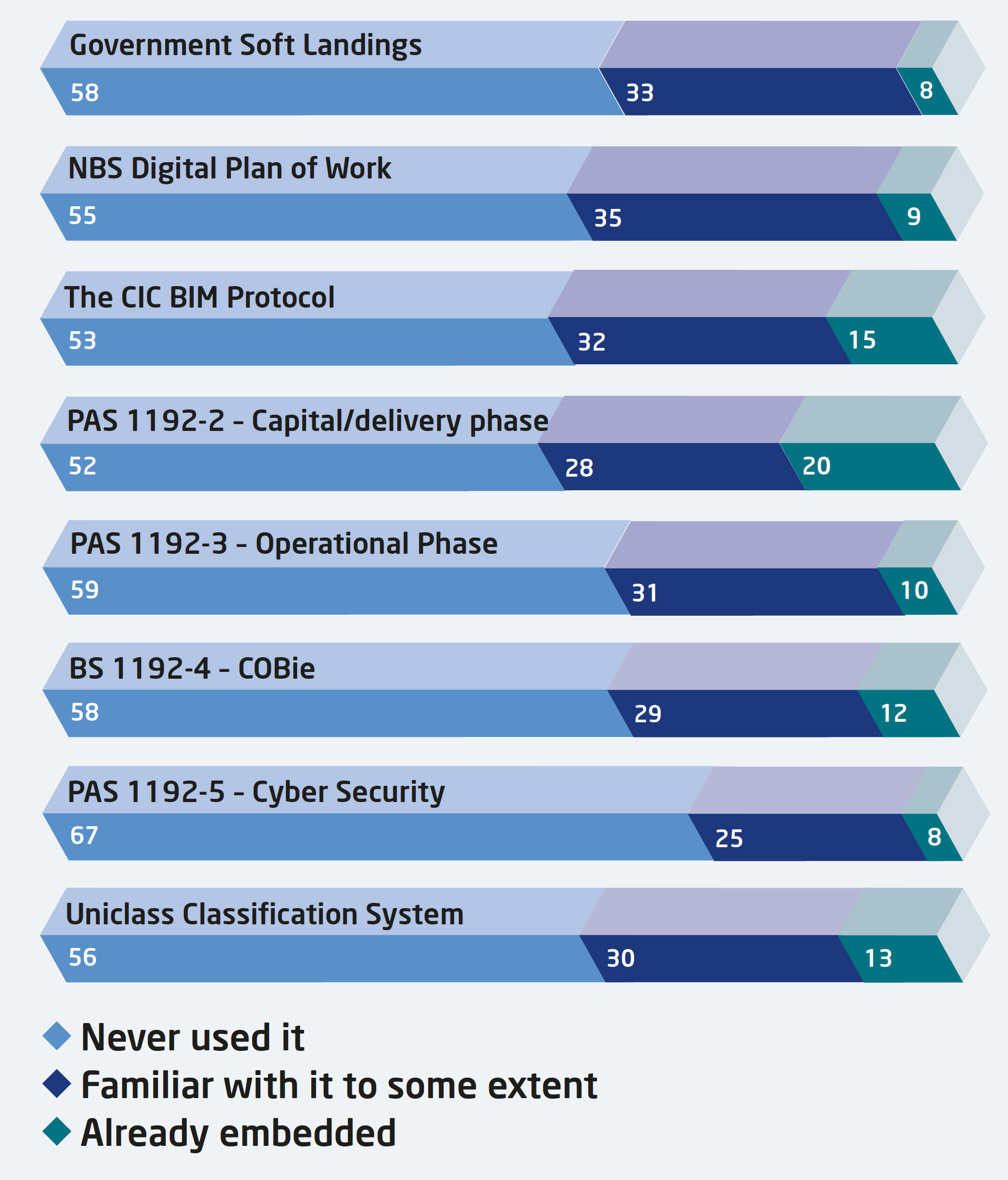There was a general feeling that clients are starting to perceive the benefits of quality BIM data beyond the construction delivery stage, and how it can improve outcomes for future operational use. However, many other clients still question the value of requiring full COBie spreadsheets, and see the BIM-to-CAFM (computer-aided FM) COBie transfer as a problematic area.
Speaking to BIM+, Terry Stocks, head of public sector at Faithful + Gould, says: “We are working with more and more clients with a multiple asset estate who are really seeing the benefit of taking the data they have and structuring it into an asset information model that increases their ability to do really effective asset management. When they have the data once, they can use it across a whole raft of projects going forward.”
Steve Massey, the supply chain development officer with Sandwell Metropolitan Borough Council, adds: “Asset management is a fundamental aspect of Level 2 BIM. For example, our housing developments will require a full asset management data, rich with all the information on components and materials, maintenance schedules, manufacturer warranties etc.”
Read related articles
COBie is already an outdated method of data management
‘Full COBie spreadsheets aren’t the way we want to go’
Data to support the management of a central government-funded building or asset must be delivered to the client in the COBie data format, as described in BS 1992-4, of the “eight pillars” of Level 2 BIM. In fact, COBie is a central premise in Level 2 BIM – the supply chain is working to BIM discipline, adding data to the model throughout, while the client has a valuable data asset.
Massey underlines the importance of a full COBie dataset, rich with details on every component, which he says will cut the cost of maintenance engineers doing pre-site audits, or compiling a bill of materials of components that need replacing.
But others question the value of requiring full COBie spreadsheets from suppliers, when much of the data included would not be relevant to future operational needs.
Richard Draper, BIM process manager at Birmingham City University, says: “You don’t have to deliver all of that stuff. When a client just says ‘give me COBie’ without identifying their specific requirements, consultants will be ripping their hair out because that level of information is just not needed to manage buildings. It’s a big job for someone that will have to be paid for unnecessarily.”
David Walters, project manager at Argent responsible for developing and implementing its BIM strategy at its King’s Cross development, adds: “Full COBie data drops are not the route we want to go down. We worked with existing asset managers and facilities managers, lease- holders and tenants, to understand what information they actually need.

In BIM+’s survey, as many as 58% of respondents claimed never to have used BS 1192-4, the standard that describes the structure and usage of COBie.
“The result was quite a short list: mostly just spatial data needed to understand floor areas and demises, to ensure we are charging people the correct rent, and data for the maintainable assets in our buildings needed for warranties for kit like primary plant, chillers, boilers etc.”
Three interviewees, including two representing the higher education sector, highlighted difficulties in importing COBie data into existing CAFM software.
Birmingham City University was seeking closer integration with the design and construction BIM tools that it was already using. Draper explains: “We are currently looking to develop a bespoke CAFM system. There are lots of systems available but they are not able to do it the way we want. So we are working with Autodesk on a project to build a system from scratch, looking at the workflows we need, and how technology can support that.
“The CAFM system will be a derivative of the Autodesk BIM 360 suite Field and Glue, and most probably SharePoint (a form of Common Data Environment in line with PAS 1192). Essentially we should end up with a combination of the two and development work will make them talk to each other.”
And Trina Ratcliffe-Pacheco, building design manager at the University of the West of England estates department, points out: “Our existing FM tool doesn’t have a 3D interface to visualise the assets in 3D, so there is a limitation on graphical output. For example, if I am sending someone to change light bulbs in a double-storey space, they are not able to identify that from the plan view in the FM tool, which means adding additional pointers in an email, such as ‘mobilise a cherrypicker’.
“Software providers are promising 3D functionality in their new versions, but I’m sceptical of whether they will be able to deliver it yet.”
BIM-to-CAFM COBie transfer is also a problematic area for Nigel Midmer, framework manager for the Southern Construction Framework at Hampshire County Council. “We want to be able to transfer data into our CAFM systems after project delivery, but have not delivered that yet,” he says.
“At present there isn’t a proprietary software solution to enable that fully and we haven’t developed one. We don’t work on a proprietary system priority and are trying to do it as a performance-based specification, and working with vendors to understand how to move things forward.”
However, it was recognised that the Government Soft Landings process, recommended from April 2016 for all central government departments, should improve the quality of COBie data, by recognising the need for early end-user engagement in the design and construction process.
Stocks from Faithful + Gould concludes: “If you are running a GSL approach with an FM provider – or someone representing the FM provider – and the operator through the delivery process, at the end you should have a solid set of data that enables you to service your CAFM system. And going into operation, there should be a smoother handover process.”
Main image: A COBie spreadsheet from Solibri












